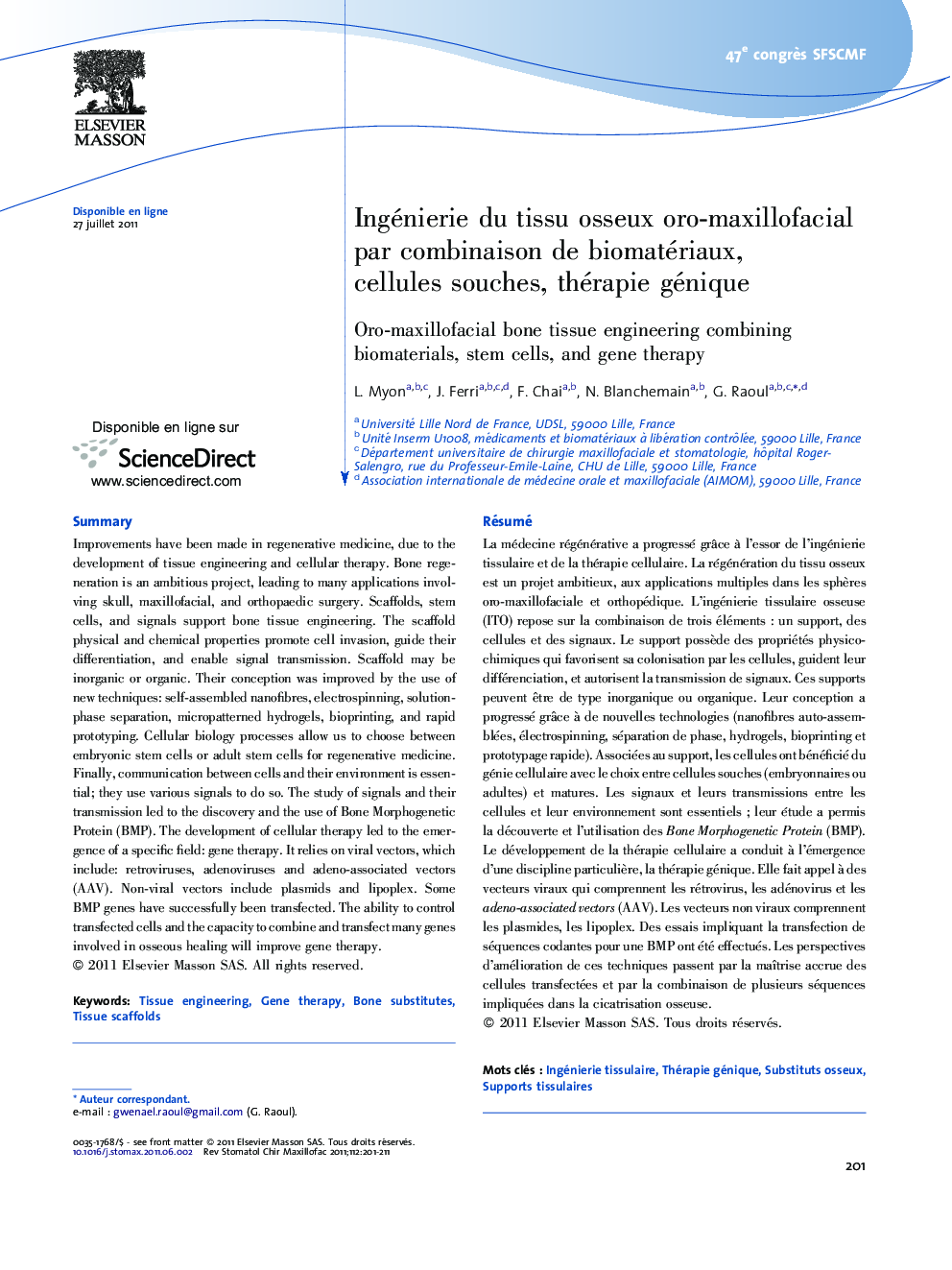| Article ID | Journal | Published Year | Pages | File Type |
|---|---|---|---|---|
| 3174249 | Revue de Stomatologie et de Chirurgie Maxillo-faciale | 2011 | 11 Pages |
Abstract
Improvements have been made in regenerative medicine, due to the development of tissue engineering and cellular therapy. Bone regeneration is an ambitious project, leading to many applications involving skull, maxillofacial, and orthopaedic surgery. Scaffolds, stem cells, and signals support bone tissue engineering. The scaffold physical and chemical properties promote cell invasion, guide their differentiation, and enable signal transmission. Scaffold may be inorganic or organic. Their conception was improved by the use of new techniques: self-assembled nanofibres, electrospinning, solution-phase separation, micropatterned hydrogels, bioprinting, and rapid prototyping. Cellular biology processes allow us to choose between embryonic stem cells or adult stem cells for regenerative medicine. Finally, communication between cells and their environment is essential; they use various signals to do so. The study of signals and their transmission led to the discovery and the use of Bone Morphogenetic Protein (BMP). The development of cellular therapy led to the emergence of a specific field: gene therapy. It relies on viral vectors, which include: retroviruses, adenoviruses and adeno-associated vectors (AAV). Non-viral vectors include plasmids and lipoplex. Some BMP genes have successfully been transfected. The ability to control transfected cells and the capacity to combine and transfect many genes involved in osseous healing will improve gene therapy.
Keywords
Related Topics
Health Sciences
Medicine and Dentistry
Dentistry, Oral Surgery and Medicine
Authors
L. Myon, J. Ferri, F. Chai, N. Blanchemain, G. Raoul,
